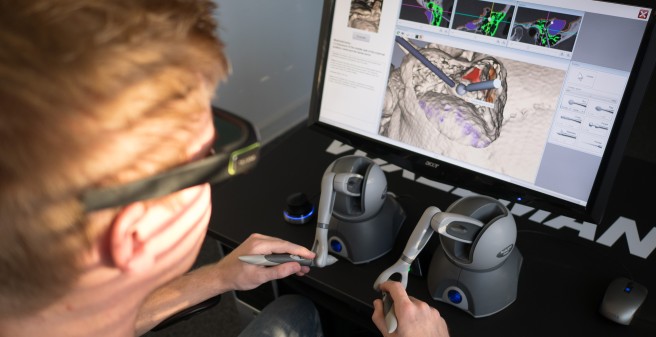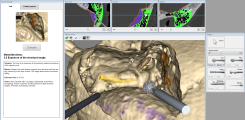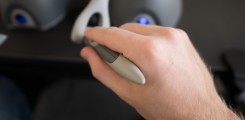VOXEL-MAN
The VOXEL-MAN Group of the Faculty of Medicine develops and manufactures computer-based surgery simulators for resident training, and offers them in cooperation with international partners.
Medical applications
Modern surgical techniques require manual dexterity and a thorough understanding of the surgical access paths. In order to minimize the risk for the patient, a significant training effort is required. Traditionally, surgical training is largely based on human preparates, which is increasingly reaching ethical and economic limitations.
Virtual training simulators not only overcome the lack of preparates, but offer further advantages especially for young residents. Difficult parts of an intervention may be practiced over and over again at any time, without special preparations or the need for disposable materials. The position of structures at risk can be much better understood using various visualization techniques. Through an automatic evaluation, the training success can be monitored and visualized as learning curves.
The VOXEL-MAN Group specializes in VR training simulators for drilling and milling interventions. Surgery simulators already established on the market include VOXEL-MAN ENT , with the modules VOXEL-MAN Tempo for the surgical access to the middle ear and VOXEL-MAN Sinus for endoscopic sinus surgery. With VOXEL-MAN My Cases , interesting own clinical cases can be imported into the system from CT, and be prepared as training cases. For dentistry, VOXEL-MAN Dental is available. With VOXEL-MAN 3D Printing , you can print an intraoperative 3D model of your virtual patient, which shows the current state of the surgery.
The effectiveness of our training simulators has been demonstrated in several independent studies .
Technical background
VOXEL-MAN simulators are based on methods of medical image computing, virtual reality, and robotics. The patient is modeled inside a computer based on real CT data, and displayed three-dimensionally on the screen. The surgical instruments are controlled using so-called haptic devices. Their handpieces can be moved freely in space. Through a patented haptic rendering, any contact between instruments and patient is directly perceptible, such that e.g. small bumps can be sensed very accurately, and worked on putting more or less pressure on the instrument. With simulated bleeding and a suction, two-handed work can be practiced.
The representations of the surgical site and instruments are complemented by vibrations and drilling noise. The surgery on virtual patients thus comes close to a real procedure in a visual, haptic and audible sense.
All VOXEL-MAN simulators are developed in cooperation with clinical partners at the UKE and other leading hospitals.
Further information
Today, VOXEL-MAN simulators are used at universities, public and private hospitals around the world. More information about our products can be found at www.voxel-man.com.



